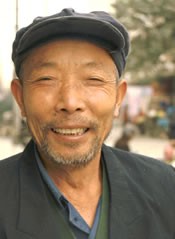Han Chinese, Gan in China

Photo Source:
Copyrighted © 2026
Create International All rights reserved. Used with permission |
Send Joshua Project a map of this people group.
|
| People Name: | Han Chinese, Gan |
| Country: | China |
| 10/40 Window: | Yes |
| Population: | 22,020,000 |
| World Population: | 22,020,000 |
| Primary Language: | Chinese, Gan |
| Primary Religion: | Ethnic Religions |
| Christian Adherents: | 8.50 % |
| Evangelicals: | 6.50 % |
| Scripture: | Portions |
| Ministry Resources: | No |
| Jesus Film: | No |
| Audio Recordings: | No |
| People Cluster: | Chinese |
| Affinity Bloc: | East Asian Peoples |
| Progress Level: |
|
Introduction / History
The Gan Chinese are part of the great Han Chinese nationality - the largest ethnic group in the world. Gan, however, is a distinct language that differs from Mandarin and other Chinese varieties.
The Xia Dynasty (2200-1700 BC): The Chinese claim 5,000 years of continuous history, beginning with the mythological Xia Dynasty. The very existence of the Xia is doubtful, as archaeological evidence has not been found to support the written accounts of the time. According to legend, the Xia was preceded by three sovereigns. The first sovereign, Fuxi, was thought to be half human and half dragon. His wife, Nugua, is credited with having created humans from clay. Fuxi taught men how to hunt, fish, and farm. The first emperor, Huang Di, is said to have invented the calendar, boats, and pottery. After 500 years, the Xia leaders "became corrupt and were ... overthrown by the Shang." Jiangxi, where most Gan live, was incorporated into the Chinese empire at an early date but remained sparsely populated until the eighth century.
What Are Their Lives Like?
Jiangxi is famous for its abundance of silver. Extensive mining caused the formation of a wealthy ruling class. Today, Jiangxi is one of the most densely populated provinces in China.
What Are Their Beliefs?
Although the majority of Gan are nonreligious, there has been a revival of Buddhism and Daoism since the relaxing of restrictions on religion in recent years. Zhuangzi (369-286 BC) was an early leader of Daoism. His writings introduced the idea of the unity of opposites, ying and yang. This led to the notion of accepting life without struggle.
In 1900, the diabolical Boxer Rebellion broke out across China. Thirty thousand Chinese Catholics and 2,000 Protestants were massacred as anti-foreign and anti-Christian feelings ran hot. The number of Christians in China more than doubled in the six years following the massacres. In 1901, one missionary in Jiangxi reported 20,000 converts. There were an estimated 400,000 Christians among the Gan Chinese in the 1990s. The JESUS Film was translated into the Gan language, although most Gan are adequately bilingual in Mandarin.
What Are Their Needs?
The JESUS Film needs to be distributed to Gan Chinese families and villages.
Prayer Points
Pray for Gan Chinese Christ-followers to spread the fragrance of Christ far and wide through evangelism and discipleship.
Pray for the Holy Spirit to spread peace, joy and love in Gan Chinese churches.
Pray for the Lord to give the Gan Chinese a huge harvest this year as a testimony of his goodness and power.